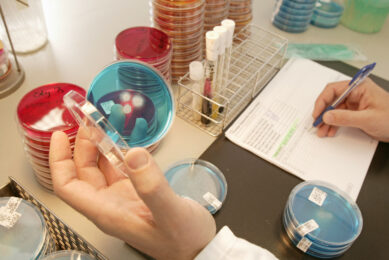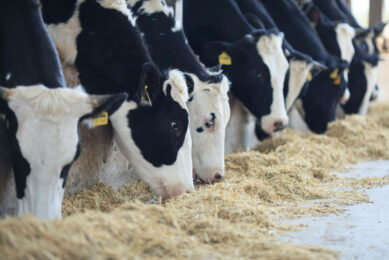The mysteries of microbes

Microbes are everywhere, the air we breathe, the ground we walk on, the food we eat and they even carry on a life inside humans and animals. Animals are unable to digest food without them and without microbes, plants couldn’t grow. But are there undiscovered microbes that may profit livestock production? And what can technology do?
Microbes (bacteria, funghi and sometimes viruses) are fascinating as they are part of our daily life and have existed longer than we can even imagine. I that is why I always find it fascinating when researchers report on new discoveries on microbes – often in harsh and unusual places.
Survival in harsh conditions
One great example is the discovery of a new community of bacteria in one of the most remote lakes of Antarctica, nearly 65 feet beneath the icy surface. The scientists from NASA, the Desert Research Institute (DRI) and the University of Illinois at Chicago, and nine other institutions, say that this discovery (in 2012) in the darkest, saltiest and coldest habitats of the world is significant because it helps increase our limited knowledge of how life can sustain itself in these extreme environments on our own planet and beyond.
These ancient microbes (bacteria) may help us tremendously in the future. They may be the answer to antibiotic resistance for example. Researchers at the Universiti Teknologi MARA (UiTM) in Malaysia have conducted a study on the mangrove ecosystem to search for actinomycetes bacteria. The mangrove ecosystem is known as a highly productive habitat for isolating actinomycetes, which has the potential of producing biologically active secondary metabolites.
The UiTM study focused on eight different mangrove sites in Malaysia, which were chosen at random to isolate and screen actinomycetes from soil samples. Among the isolated filamentous bacteria, five isolates showed antimicrobial activity from direct culture broth against at least one of the test organisms. Meanwhile, four extracts of ethyl acetate showed activity against Gram-positive test organisms. The results revealed that marine actinomycetes is a potential source for producing antibiotics. Although viruses are not always considered microbes, I do want to touch on them briefly as well. I came across an interesting study where a team of French investigators discovered viruses containing genes for antibiotic resistance in a fossilised faecal sample from 14th century Belgium, long before antibiotics were used in medicine.
New era of microbe use
Ancient microbes are not old fashioned, they hold the keys for future challenges. According to the website NextNature“humans are about to enter into a new phase of our ancient partnership, thanks to genetic engineering, technology, and good old evolution. We may soon create bacteria that eat plastic, emit light, and even tell us whether or not we’re healthy.” An interesting example is reported by Technews Daily. Genetically modified microbes have been engineered to swim down fine cracks in concrete and once at the bottom produce a mixture of calcium carbonate and a bacterial glue. The building is “knitted” back together as the glue combines with the filamentous bacterial cells and hardens to the same strength as the surrounding concrete. Another example mentioned is a research study in which engineers have used the well-known bacteria Escherichia coli to solve a mathematical problem. In the research, they have modified the DNA of the bacteria and let them find the shortest route between three cities. Each city has its own combination of genes, which causes the bacteria to glow red of green. The possible routes between the cities were explored by the random shuffling of DNA. The bacteria that had found the best route fluoresced green and red, resulting in yellow colonies.
How can animals profit?
The above mentioned examples are really futuristic to me and the idea that E. coli can solve a mathematical problem is something I could never imagine to be possible. What can ancient microbes and/or the new techniques do to make microbes better and smarter for the animal feed and livestock industry? Microbes are already used for many years (lactic acid bacteria for the production of silage. Probiotics to stimulate gut health. But would it be possible to create microbes with more functionalities than that? Can we produce a microbe that thinks and acts in the gut of animals, and reacts according to what the animal needs. If we can engineer bacteria to knit concrete wall, would it be possible to have microbes ‘knit’ the cracks in the gut wall, after the animals went through an infection? And what about thermal stability? Can we produce microbes (based on ancient science) that are naturally heat resistant? Heat stable ingredients is an on-going discussion as more feed volumes are pelleted. And can we finally put a stop to antibiotic resistance, so that we are able to still treat human infections? It may all sound futuristic, but remember…the future starts today.











